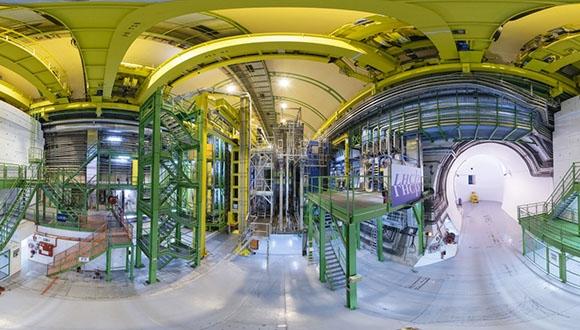Theoretical physicist correctly predicts mass of rare particle
TAU's Prof. Marek Karliner made a prediction three years ago that CERN has now proven accurate
Three years ago, a theoretical physicist who specializes in elementary particle physics, predicted, along with a colleague, the mass of a new sub-atomic particle that had never been seen. That physicist was Prof. Marek Karliner, from the Raymond and Beverly Sackler School of Physics and Astronomy at Tel Aviv University.
Theoretical physics is a science that uses mathematical models and abstract physical systems to describe and predict the behavior of natural physical systems. This is unlike experimental physics, that uses experimentation to test these systems.
Last week, scientists from the particle accelerator at CERN, announced the discovery of a new particle. Its mass was measured, and found almost precisely identical to the mass predicted by Prof. Karliner: the prediction turned out to be accurate by over 99.8%. More details about the new particle, called Xi-cc++, were presented at the European Physical Society High Energy Physics in Venice.
The new particle with the unusual name will shed light on the nature of the forces that act between quarks – the basic particles protons and neutrons are made of, which in turn are the building blocks of atoms and therefore of all the matter around us in the universe.
The power of the atom
There are three light quarks and three heavy quarks. Of the six, the heaviest quark, called “top”, has such a short life that it doesn’t have time to hook up with the other five quarks. The remaining five form extremely strong ties with each other. Every three out of those five can exist in a wide variety of combinations. The heavier the quarks are, the harder it is to produce them in the particle accelerator, because creating them takes more energy and they decay faster.
The interaction acting between the quarks, called “the strong force”, is one of the four elementary forces in Nature (along with electromagnetic force, the weak force and gravity). There’s a reason “the strong force” has the name it does – it’s 1038 times more powerful than gravity. But the range of the effects of the strong force is extremely shourt– roughly the radius the atomic nucleus.
The strong force binds together quarks into hadrons (particles composed of quarks and gluons). There are two kinds of hadrons: baryons and mesons. Baryons contain three quarks and mesons contain a quark and an anti-quark. Neutrons and protons are the most common baryons. Until now, we’ve only seen baryons that include three light quarks or one heavy quark and two light ones, but experts agreed that baryons with two heavy quarks must exist as well. “The challenge was to predict from theory the various attributes of a trio that includes two heavy quarks and one light one,” Prof. Karliner explained. “And that includes, first of all, their mass.”
In an article Prof. Karliner wrote in 2014, together with Prof. Jonathan Rosner from the University of Chicago, who did his postdoctoral research with Prof. Yuval Ne’eman at TAU, they calculated all the possible variations of two heavy quarks and one light one, and concluded that there are three options, with sub-shades.
The most accurate prediction
"In the article, we predicted the particle’s mass, as well as attributes that haven’t been measured yet. The mass the scientists at CERN measured is 3621 +/- 1, in units called MeV. Our prediction three years ago was 3627 +/- 12. The error is less than 0.2% of what was measured in the experiment. Many scientists before us tried to predict the mass, using different theoretical methods. Now it turns out our prediction is the most accurate. The new particle is almost 4 times heavier than the proton, and its electric charge is twice that of the proton.”
Now the research team as CERN will examine other attributes of the Xi-cc++ particle. These will allow us to deepen our understanding of the force that acts between quarks, leading to improved understanding of the strong force which holds atomic nuclei together. CERN will now also search for additional particles that include other combinations of two heavy quarks and a light quark.
“The first thing I’m looking forward to is the measurement of the Xi-cc++ lifetime, i.e how long it takes to for it to decay into lighter particles. We predicted that figure as well, and when it’s measured we’ll know how close we were to being right,” Prof. Karliner said.





